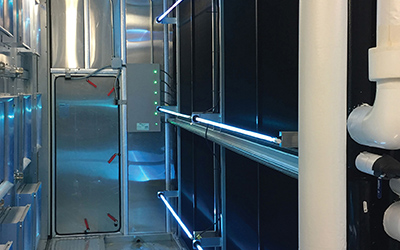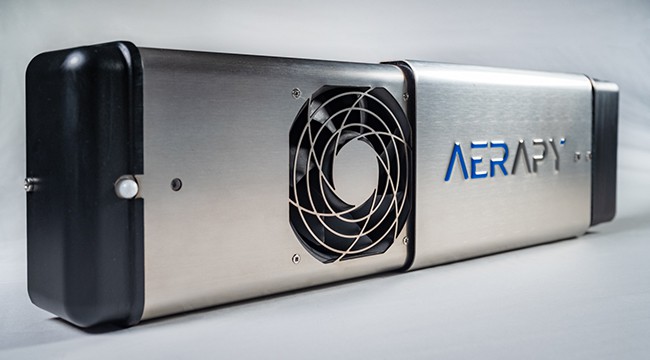UV Disinfection: The Cutting-Edge Innovation Changing Sanitation Practices
In the realm of hygiene techniques, one modern technology has actually become a game-changer: UV disinfection. With its ability to eradicate dangerous pathogens, this innovative innovation is reinventing the method we approach cleanliness and health. How does UV sanitation job, and what are the advantages it supplies? From medical care settings to food handling, UV sanitation is making its mark in different industries. In this conversation, we will explore the complexities of this transformative technology and expect its encouraging future.
How UV Sanitation Works
UV sanitation functions by using ultraviolet light to damage or inactivate microorganisms, providing a very effective and chemical-free technique of hygiene. This modern technology utilizes the power of short-wavelength UV-C light, which is capable of damaging the DNA and RNA of bacteria, therefore rendering them not able to cause and replicate injury.
The process starts with the installment of UV disinfection systems, which are composed of UV lamps that discharge UV-C light. These lamps are tactically positioned in areas where microbial contamination is a problem, such as water treatment plants, healthcare facilities, research laboratories, and food processing centers.
When microbes are exposed to UV-C light, the photons penetrate their cell walls and get to the DNA and RNA within. The high-energy UV-C photons interfere with the genetic product by producing bonds in between nearby nucleotides, leading to the formation of thymine dimers. These dimers protect against the microbes from duplicating, making them safe.
UV sanitation is extremely reliable versus a variety of bacteria, consisting of germs, bloodsuckers, and infections. It is particularly reliable against waterborne microorganisms like E. coli, Giardia, and Cryptosporidium. UV sanitation is a chemical-free technique, removing the demand for possibly damaging anti-bacterials and lowering the threat of dangerous disinfection byproducts.
Advantages of UV Sanitation
UV disinfection supplies many advantages in the area of cleanliness, making it an extremely chosen approach for efficiently removing damaging microorganisms. Unlike typical disinfection approaches that count on chemicals, UV disinfection uses ultraviolet light to ruin the DNA of bacteria, rendering them not able to reproduce and trigger infections.

UV disinfection is likewise highly flexible in its applications. It can be utilized in different setups, consisting of hospitals, schools, food processing centers, and water therapy plants. UV sanitation systems can be conveniently incorporated right into existing cleanliness methods, supplying an extra layer of protection against infectious conditions.
In enhancement to its performance and convenience, UV sanitation is additionally eco-friendly. It does not create any type of unsafe results or residues, making it a safe and lasting technique for cleanliness - uv surface disinfection. UV disinfection calls for marginal upkeep and has a long life expectancy, resulting in price financial savings in the long run.
UV Sanitation in Healthcare Setups
In medical care setups, UV disinfection has actually become a cutting-edge technique for efficiently removing harmful microorganisms. Using UV light to sanitize surface areas and equipment has actually acquired appeal because of its ability to give an additional layer of security against microorganisms. UV sanitation works by giving off ultraviolet light at a certain wavelength that is deadly to bacteria, viruses, and other bacteria. This modern technology provides a number of advantages in medical care settings.
First of all, UV disinfection is a non-chemical method, making it an eco pleasant alternative compared to conventional sanitation approaches that commonly entail the usage of harsh chemicals. Making use of UV light eliminates the requirement for chemical anti-bacterials, reducing the risk of dangerous deposit or chemical direct exposure to both people and medical care workers.
Additionally, UV disinfection is very efficient in eliminating a wide variety of microbes, including drug-resistant germs such as MRSA and C. difficile. It offers a constant and trusted disinfection process, ensuring that all surfaces and equipment are thoroughly disinfected, also in hard-to-reach locations.

UV Sanitation in Food Handling
The application of UV disinfection expands beyond healthcare settings and locates considerable value in the world of food handling. uv surface disinfection. UV sanitation technology is coming to be significantly prominent in the food industry as a result of its capability to successfully eliminate harmful microorganisms and enhance food safety and security
One of the main advantages of UV disinfection in food handling is its capability to target a large range of microorganisms, including molds, infections, and microorganisms. By using UV light at certain wavelengths, it is feasible to interrupt the DNA and RNA of these microorganisms, providing them unable to trigger or recreate damage. This innovation can be applied to various phases of the food handling chain, consisting of surface disinfection, tools sterilization, and water treatment.
UV disinfection gives a non-thermal and chemical-free approach of disinfecting food. Unlike conventional disinfection methods that rely upon chemicals or warmth, UV technology does not leave any kind of deposit or modify the taste, texture, or dietary value of the food. This makes it a perfect solution for markets that require rigorous adherence to top quality requirements.
Additionally, UV sanitation systems are simple to set up and operate, needing very little maintenance. They can be integrated right into existing handling lines without creating considerable disruptions to the manufacturing process. Additionally, UV systems have a fast treatment time, enabling continuous handling and decreasing downtime.
The Future of UV Sanitation

One area where UV disinfection is expected to make significant advancements remains in the area of health care. With the surge of antibiotic-resistant bacteria and the requirement for extra effective disinfection approaches, UV light has the prospective to play a crucial role in decreasing healthcare-associated infections. UV disinfection systems can be utilized to sanitize surface areas, devices, and even the air in healthcare centers, assisting to stop the spread of dangerous virus and improve client safety.
Another sector that can profit from innovations in UV sanitation innovation is the food market. UV light has already proven to be an effective approach for decontaminating food items and decreasing the risk of foodborne illnesses. As technology improves, we can expect to see extra reliable and economical UV disinfection systems being applied in food handling plants, guaranteeing that the food we take in is safe and free from unsafe germs.
Conclusion
To conclude, UV sanitation is an innovative technology that is changing sanitation practices in health care setups and food processing. By utilizing UV light to eliminate or shut off microorganisms, it uses various benefits such as performance, check these guys out security, and performance. With recurring developments in this area, UV disinfection holds great prospective for the future of sanitation, giving a sustainable Learn More and reputable remedy for preserving tidy and sanitary settings.
UV sanitation is a chemical-free technique, removing the need for potentially damaging anti-bacterials and decreasing the danger of unsafe disinfection by-products.
Unlike typical sanitation methods that rely on chemicals, UV disinfection uses ultraviolet light to ruin the DNA of microbes, providing them unable to recreate and create infections. Unlike traditional disinfection methods that rely on chemicals or warm, UV modern technology does not leave any type of deposit or change the preference, appearance, or dietary worth of the food. As modern technology enhances, we can expect to see much more effective and cost-efficient UV sanitation systems being applied in food handling plants, ensuring that the food we take in is safe and totally free from damaging germs.
In verdict, UV sanitation is a cutting-edge modern technology that is changing sanitation methods in health care settings and food handling.
Comments on “Utilizing the Power of UV Surface Disinfection: A Comprehensive Overview for Healthier Spaces”